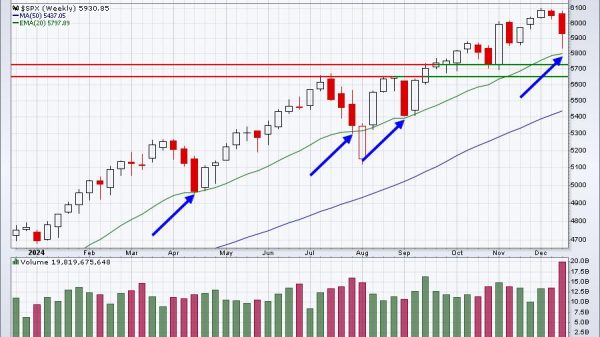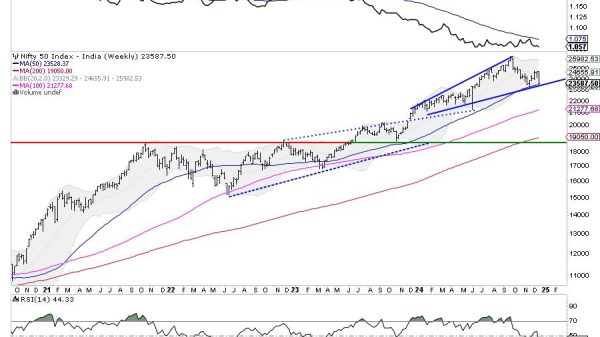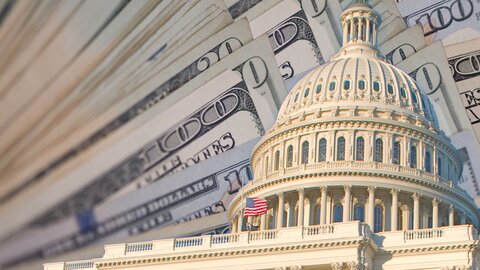Romina Boccia and Dominik Lett
The federal government will spend $6.3 trillion in 2023, 27 percent is discretionary and 73 percent is mandatory. Discretionary spending refers to federal programs that receive funding through annual appropriations. Less than half of discretionary spending is for defense. More than half is for nondefense activities including education, infrastructure, scientific research, and other programs. If Congress does not pass annual appropriations bills before October 1st (the beginning of the federal fiscal year), the government undergoes a partial “shutdown” where non‐essential functions are halted until Congress enacts new funding bills. Congress may also enact a continuing resolution (CR) which temporarily continues the previous fiscal year’s level of funding. In contrast, mandatory spending refers to federal programs that are funded outside of annual appropriations, including Social Security, Medicare, and food stamps (SNAP). Mandatory program spending is typically ongoing, continuing from year to year, unless Congress changes the law. This fact sheet lays out key details legislators and the public should know about discretionary spending.
Discretionary spending accounts for less than one third of all federal spending, that’s $1.7 trillion in 2023 or 6.6 percent of gross domestic product (GDP).
Discretionary spending will reach $2.4 trillion or 6 percent of GDP by 2033 according to projections by the Congressional Budget Office (CBO).
Discretionary spending will consume one quarter of the U.S. government’s projected $9.8 trillion total budget in 2033.
Discretionary spending is declining as a share of the overall budget, primarily due to the growth of major mandatory entitlement spending like Social Security and Medicare.
Between 1973 and 2023, discretionary spending’s budgetary share fell from 53 percent to 28 percent of total federal spending.
Compared to the size of the economy, discretionary spending is declining from 9.6 percent of GDP in 1973 to 6 percent of the GDP in 2023.
For every American household, the United States will spend about $13,000 in discretionary spending in 2023.
Discretionary spending can be divided into two main categories: defense and nondefense.
Discretionary spending is allocated as budget authority and disbursed as outlays. Timing differences explain discrepancies between annual budget authority and discretionary outlays or spending.
The federal government will spend $792 billion on defense discretionary programs in 2023.
Nondefense includes everything from transportation to education to agriculture. See the graph below for a breakdown of nondefense spending in fiscal year 2023.
The United States will spend $919 billion on nondefense discretionary programs in 2023.
Since 1973, nondefense discretionary spending has grown 75 percent faster than defense.
As a share of the United States’ economic output, defense spending has fallen from 9 percent of GDP in 1962 to 3 percent of GDP in 2023. Nondefense spending has grown from 3 percent of GDP to 4 percent of GDP over the same period.
By 2033, the United States is projected to spend $1.1 trillion on defense and $1.3 trillion on nondefense.
Congress also distributes added funds through supplemental appropriations. Supplemental appropriations are in addition to regular discretionary appropriations and distinct from mandatory spending. Supplemental appropriations are not subject to discretionary spending limits.
Over the last five years, Congress has spent $1 trillion through supplemental discretionary appropriations. If mandatory spending provisions were included, pandemic‐related legislation cost many trillions more.
Discretionary spending limits encourage budgetary discipline.
The Budget Control Act of 2011 capped discretionary spending between 2012 and 2021.
For the first six years, discretionary spending declined and then remained flat in real terms.
Since then, discretionary spending has risen significantly, largely due to emergency spending in response to COVID-19 which was not subject to the top‐line spending cap.
The Fiscal Responsibility Act limits discretionary spending for two years, at $1,590 billion for FY24 and $1,606 billion for FY25.
Because the discretionary budget is annual, funding priorities are more sensitive to recent political trends and national events. Interest groups and matters that catch constituents’ attention influence short‐term legislative outcomes.
Republican conferences in the House and Senate banned parochial funding requests (earmarks or so‐called congressionally directed spending) in early 2011.
Earmarks bypass merit‐based formulas and competitive award processes, in favor of politically directed spending and are more likely to lead to a misallocation of resources. Rent seeking from interest groups also consumes legislators’ time and taxpayer dollars.
Earmark spending increased from $9 billion in 2022 to $15 billion in 2023.
Further reading:
How a Better Budget Control Act Would Limit Spending and Control Debt “Congress should consider a Better Budget Control Act at the debt limit this year to reduce inflationary pressures and take steps toward avoiding a future fiscal crisis.”
Dollar‐for‐Dollar, Parity, and Negotiating at the Debt Limit “Congress should budget based on fiscal realities and in accordance with national priorities, instead of basing decisions on catchy, yet misguided, tag lines.”
Download a printable PDF version of this fact sheet here.























